Exploring Unconventional Architecture: Innovation & Impact
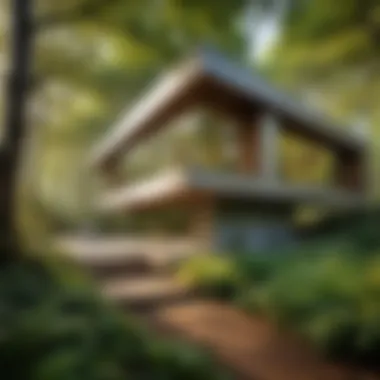
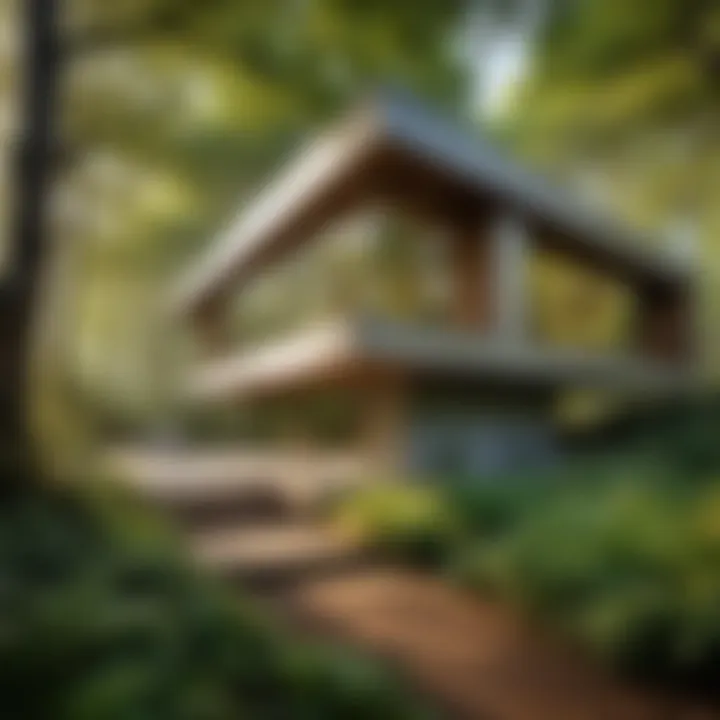
Intro
Unconventional buildings are more than mere structures; they embody creativity and redefine architectural boundaries. These buildings may challenge traditional forms and materials, presenting both aesthetic appeal and functional innovation. In the world of contemporary architecture, they play a crucial role, prompting discussions around urbanization and sustainability.
This architectural exploration seeks to unravel the uniqueness of these structures, focusing on their influence on modern spaces. From the enchanting curves of the Guggenheim Museum Bilbao in Spain to the geometric flair of the Dancing House in Prague, each example reveals how culture and creativity intertwine in the design process.
The implications of unconventional architecture extend beyond visual appeal. They often serve specific community needs, engage with the environment, and redefine urban landscapes. By examining these buildings, we gain insights into the challenges faced during their creation, such as zoning issues or environmental concerns.
Through this examination, the article will delve into key themes including:
- The design philosophies behind unconventional structures
- How sustainability is integrated into architectural innovation
- Cultural relevance and how different regions interpret unconventional architecture
- The impact of these buildings on local tourism and community identity
In embarking on this journey, we will not only appreciate the design but also understand the voices and values that resonate within these spaces.
Understanding Unconventional Buildings
Understanding unconventional buildings is essential in comprehending today’s architecture. These structures challenge traditional norms and push the boundaries of design. They invite reflection on how spaces shape human experience. By analyzing these buildings, one can appreciate creative solutions to modern challenges such as sustainability and urban crowding.
Unconventional buildings often showcase unique aesthetic qualities and innovative structural forms. They reflect a desire for more personalized and functional spaces. Moreover, these buildings often incorporate sustainable materials and practices. This commitment to the environment resonates with current global concerns about climate change.
Considering unconventional architecture leads to broader discussions about community identity. They often become cultural landmarks and tourist attractions, stimulating local economies.
Definition and Characteristics
Unconventional buildings are structures that diverge from traditional architectural designs. They often feature unexpected shapes, materials, and uses. Common characteristics of these buildings include innovative forms, unusual materials, and an emphasis on sustainability.
For example, buildings might include living walls or solar panels as an integral part of the design. The focus lies not only on functionality but also on creating an emotional connection with occupants and passersby. This approach encourages a relationship between the built environment and its users.
Historical Evolution
The evolution of unconventional buildings reflects changes in society's needs and values. Historically, architecture stuck to methodologies that provided form and function at the expense of creativity. However, the 20th century saw movements like modernism and postmodernism emerge, encouraging architects to think differently.
In recent years, the rise of technology has further accelerated this trend. Architects have access to advanced tools that allow for more complex designs. Innovations like 3D printing and parametric design have made it easier and more cost-effective to realize unusual structures. This technological evolution is a key driver in the growth of unconventional buildings.
"Architectural innovation represents not just aesthetics, but a way to address pressing global issues."
Through understanding both the definition and historical context, we gain insight into the significance of unconventional buildings. They are not merely structures; they represent a shift in how we view space and design in relation to human needs.
Types of Unconventional Buildings
In the realm of architecture, unconventional buildings serve as a reflection of creative thought and innovation. Understanding the various types of these structures enriches our appreciation for architectural diversity. Each type brings unique benefits and considerations, prompting discussions about sustainability, adaptation, and the future of urban environments.
Organic Architecture
Organic architecture aims to create harmony between human habitats and the natural world. This design philosophy ensures that buildings appear as integral parts of their surrounding landscapes. For instance, Frank Lloyd Wright's Fallingwater is hailed for its seamless integration with nature. Structures designed under this concept utilize natural forms and materials, leading to environmentally friendly results.
Benefits of Organic Architecture:
- Establishes a strong link between inhabitants and their environment.
- Often uses local materials, reducing transportation costs.
- Promotes sustainability by minimizing disruption to local ecosystems.
However, organic architecture can come with challenges, including higher costs due to custom designs and potential limitations in functionality within the design's natural shapes.
Sustainable Structures
Sustainable structures prioritize methods that minimize environmental impact. They focus on efficiency and the use of renewable resources. Green roofs, solar energy systems, and water-saving technology are some examples. Notably, buildings like the Bosco Verticale in Milan exemplify how sustainable architecture can be both striking and effective.
Key Considerations for Sustainable Structures:
- Lifecycle assessment to evaluate potential environmental impacts.
- Use of recycled materials in construction to reduce waste.
- Implementation of energy-efficient systems to lower utility costs.
By employing these strategies, sustainable structures become part of the solution to urban issues like climate change, contributing to a healthier planet.
Adaptive Reuse Projects
Adaptive reuse involves repurposing old buildings for new functions while preserving their historical significance. Structures that have undergone this transformation often tell stories of the past while serving contemporary needs. An example includes the Tate Modern gallery housed in a former power station in London.
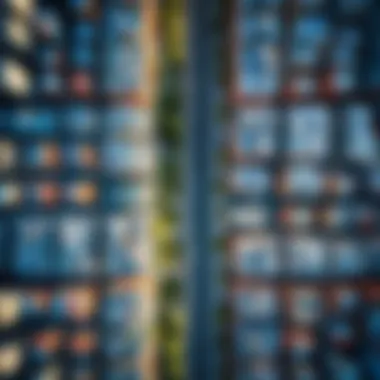
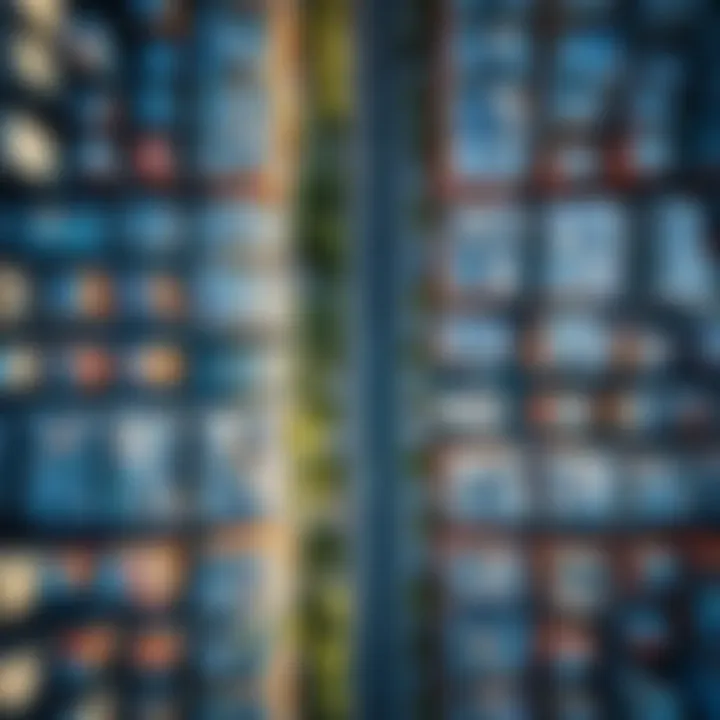
Advantages of Adaptive Reuse:
- Conserves resources by reducing the need for new materials.
- Supports local history and community identity.
- Can attract tourism and stimulate local economies.
Despite these benefits, the process of adaptive reuse can also confront regulatory challenges, as restoring older buildings often involves navigating strict guidelines and procedures.
Temporary Installations
Temporary installations challenge conventional notions by existing for a limited duration. These structures can be anything from pop-up shops to seasonal art exhibits. They play a crucial role in testing ideas that may inform future permanent designs. One noteworthy example is the Serpentine Pavilion in London, which invites different architects each year to conceptualize a new temporary structure.
Benefits of Temporary Installations:
- Encourages experimentation with design and materials.
- Creates excitement and engagement in urban spaces.
- Provides opportunities for dynamic community interactions.
However, these structures also face challenges regarding funding and logistics, as their impermanence can deter investment.
In summary, unconventional buildings reveal powerful narratives about our environment and society. From organic architecture prioritizing nature's beauty to sustainable structures promoting efficiency, each type plays a distinct role in shaping the future of architecture, making it vital to engage in further exploration.
Key Principles of Design
In examining unconventional buildings, understanding the Key Principles of Design is essential. These principles guide architects and designers to create structures that not only stand out but also serve a functional purpose while being sustainable. A focus on innovative design challenges traditional building norms, embracing creativity and originality.
Innovative Use of Materials
The innovative use of materials is a hallmark of unconventional architecture. Materials that are typically overlooked can bring new life to a design. For example, architects often use recycled metal or repurposed wood to create visually engaging structures that also promote sustainability. Advanced materials like self-healing concrete or translucent aluminum allow for greater design flexibility.
Utilizing materials in new ways not only enhances the aesthetic appeal but also can significantly improve the building's performance. Consider how the Green Building movement has encouraged the use of sustainable resources, benefiting both the environment and the economy.
- Benefits of innovative materials:
- Reduced environmental impact
- Improved energy efficiency
- Unique aesthetic qualities
Integration with Environment
Integration with the environment is another critical aspect of unconventional architecture. Buildings should harmonize with their surroundings, considering both natural and urban contexts. This principle ensures that structures do not merely occupy space but enhance it. Architects often study local ecosystems to inform their designs, ensuring that new constructions support local flora and fauna.
For instance, incorporating green roofs, natural ventilation, and passive solar heating can minimize energy consumption and promote biodiversity. A well-integrated building will respect local climate conditions and use natural light effectively, reducing reliance on artificial light.
- Key elements of environmental integration:
- Site selection that minimizes disruption
- Use of local materials
- Design that embraces natural elements like sunlight and wind
Functionality and Aesthetics
Balancing functionality and aesthetics is paramount in unconventional buildings. A structure must serve its intended use while being visually striking. Architects strive to create spaces that are both usable and beautiful, appealing to the senses.
Gone are the days when functionality led to sterile and uninspiring environments. Now, designers meld beauty with purpose, ensuring that each space creates an experience for its users. For instance, The Guggenheim Museum in Bilbao is not just an iconic structure; its design also enhances visitor experience by creating fluid movement through the space.
- Considerations for functionality and aesthetics:
- User experience and flow
- Visual harmony within the surrounding environment
- Materiality that complements functionality
"In design, simplicity is not the goal. It is the result of a good idea and modest expectations."
Understanding these principles is crucial for architects exploring unconventional buildings. They help in creating spaces that push boundaries without losing sight of practicality. In doing so, these designs enrich communities and redefine urban landscapes.
Cultural Implications
Cultural implications of unconventional buildings extend beyond mere aesthetics. These structures reflect local identity, heritage, and the community's values. As a societal mirror, they resonate with the collective memory while simultaneously pushing the boundaries of traditional architectural design. When exploring unconventional buildings, one must consider how these creations influence and are influenced by their cultural contexts.
Local Traditions and Innovations
Unconventional buildings often emerge from a blend of local traditions and modern innovations. Architects frequently seek inspiration from historical practices, integrating them into new designs. For example, the use of locally sourced materials can enhance the sustainability of a structure while paying homage to regional craftsmanship. It helps maintain a cultural narrative grounded in the community's identity.
Consider the example of the Tanzanian wooden houses, where local craftsmanship meets contemporary designs. Their construction not only preserves traditional building techniques but also embodies innovative architectural concepts. This synergy between the past and the present encourages communities to celebrate their heritage, fostering pride and continuity.
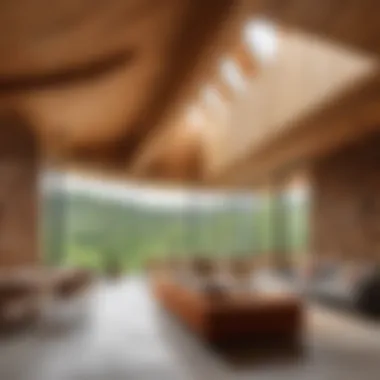
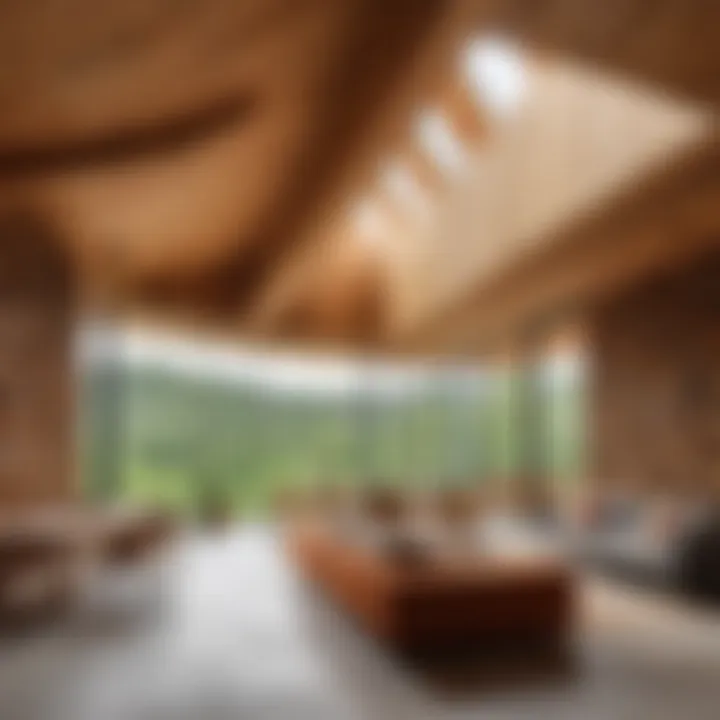
Furthermore, cultural elements can also determine the functional aspects of these buildings. For instance, in Japanese tea houses, the structure’s layout and materials deliberately reflect simplicity and harmony, deeply rooted in cultural philosophies. By preserving such traditions, unconventional architecture serves as a bridge, connecting generations and ensuring the continuity of local customs.
Impact on Community Identity
The impact of unconventional architecture on community identity cannot be understated. Unique structures often act as focal points, attracting both residents and tourists. They allow communities to carve out a distinct architectural vocabulary, which differentiates them from surrounding areas. As such, modern architectural practices that honor local identity can significantly empower communities.
In cities like Bilbao, the Guggenheim Museum stands as a testament to how unconventional buildings can transform urban identity. The museum not only revitalized the local economy but also redefined the city’s image on a global scale. It became a landmark of innovation and culture, leading to a flourishing tourism sector.
However, the benefits are not limited to economic gains. Unconventional buildings often become symbols of resilience, creativity, and adaptability. They unify communities and foster a sense of belonging. In some cases, they even inspire local movements advocating for sustainable practices and social changes, indicating a broader societal engagement.
"Architecture is not merely a reflection of society but a powerful tool that shapes the shared experiences and identities within communities."
Challenges of Unconventional Architecture
The topic of challenges in unconventional architecture is crucial for understanding the barriers that innovative buildings face. Despite their potential to transform cities and communities, these structures often encounter significant obstacles that hinder their development and acceptance. Recognizing these challenges allows architects, planners, and communities to address them effectively, ensuring that future projects contribute positively to urban landscapes.
Regulatory and Legal Hurdles
One of the primary challenges is navigating the regulatory landscape.
Local building codes and zoning laws are often designed for traditional structures. These regulations can be restrictive, limiting the options available for designers. For instance, many regions have height restrictions or specific aesthetic guidelines that do not align with the bold, imaginative forms associated with unconventional architecture.
Innovative designs may struggle to gain approval. This can lead to lengthy delays and increased project costs. In some cases, architects must compromise on their original vision to comply with existing laws. Understanding these regulations early in the project planning stages is essential for avoiding potential roadblocks.
Economic Viability
The economic aspect is also a significant concern. Unconventional buildings can demand higher initial investment due to unique materials and construction methods. This can deter investors and clients who favor traditional approaches. Moreover, these projects may struggle to find funding, as financial institutions often prefer more conventional designs with predictable returns.
Despite the challenges, unconventional architecture can yield long-term benefits. Unique and visually appealing structures can become landmarks. They can attract tourism and interest, potentially leading to a boost in local economies. Communities must weigh the initial costs against the potential for future economic growth when considering such projects.
Public Perception and Acceptance
Public perception plays a vital role in the success of unconventional architecture. Innovative designs often face skepticism. People may view them as impractical or out of place. This can lead to public pushback, affecting a project's approval and support.
Building community acceptance is essential. Engaging with local residents and incorporating feedback can help mitigate concerns. Educating the public about the benefits of unconventional structures can foster appreciation and enthusiasm. For example, emphasizing energy efficiency or cultural significance can resonate with communities and create a sense of shared ownership.
Case Studies of Notable Structures
Case studies of notable structures serve as powerful examples in understanding the scope and significance of unconventional architecture. These buildings illustrate the innovative designs and approaches taken by architects to push the boundaries of traditional construction. The discussed case studies showcase unique solutions to specific problems, cultural elements in design, and their role in shaping urban environments. Notably, they also highlight the different reactions of communities and visitors to these structures, offering a multi-faceted view of their impact.
The Guggenheim Museum, Bilbao
The Guggenheim Museum in Bilbao, designed by Frank Gehry, stands as a landmark of contemporary architectural innovation. Opened in 1997, this museum is revered for its remarkable use of titanium, creating a shimmering effect that interacts with sunlight and contrasts beautifully with the surrounding landscape. The fluid, organic shapes defy conventional architectural norms and invite visitors to experience the space in novel ways.
The impact of the Guggenheim Museum extends beyond its aesthetic appeal. It has played a crucial role in the revitalization of Bilbao, transforming the city’s industrial heart into a cultural hub. This is often referred to as the "Bilbao Effect," where the building’s presence significantly boosts local economies through increased tourism and global attention. The museum not only provides visitors with a chance to engage with modern and contemporary art but also enhances the community’s identity and pride in their urban landscape.
The Crooked House, Poland
Located in Sopot, Poland, the Crooked House (Krzywy Domek) curiously captivates with its distinct and irregular shapes. Completed in 2004, the design mimics the art of Jan Marcin Szancer, a Polish illustrator, blending imaginative elements with practical use. This building stands out not only for its visual quirkiness but also for its role as a commercial space, housing shops and eateries that draw both locals and tourists.
The Crooked House embraces a playful relationship with architecture, inviting onlookers to question traditional design values. The popularity of this structure illustrates how unconventional buildings can serve not merely as shelters but also as cultural icons that stimulate curiosity and inspire creativity. Its significance lies in encouraging dialogues about architectural boundaries and the possibilities that come with bending those limits.
The Up House, Utah
The Up House in Utah is an example of architecture deeply rooted in pop culture. Inspired by the Pixar movie "Up," this residence is a whimsical expression of personal passion and creativity. Built in the early 2000s, it features a collection of vibrant colors and balloon motifs that evoke a sense of joy and nostalgia.
Located in a neighborhood that embraces traditional homes, the Up House stands apart, sparking conversations on community acceptance of unconventional designs. It serves as a reminder that architecture can reflect individual stories and aspirations. Although it might not follow the typical standards of home design, it has become a tourist attraction, drawing fans of the film and curious visitors alike.
The Role of Technology in Modern Design
The role of technology in architecture has become increasingly critical as designers seek to balance creativity with practicality. As unconventional buildings emerge on the design landscape, technology's contribution cannot be overlooked. Various elements such as 3D printing and smart innovations are reshaping how architects envision and create these structures. The integration of cutting-edge technology fosters innovation, streamlines construction processes, and enhances overall sustainable practices.
3D Printing in Architecture
3D printing is revolutionizing the architectural field, providing unprecedented opportunities for unique building forms. This technology allows for the precise layering of materials, making it possible to create complex structures that were previously challenging or impractical to achieve.
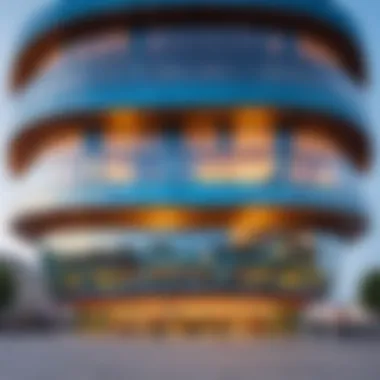

- Customization: One of the most compelling aspects of 3D printing is the ability to easily customize designs. Architects can rapidly prototype and modify shapes to fit specific site conditions or aesthetic desires.
- Material Efficiency: Traditional construction methods often produce significant waste. 3D printing minimizes this, allowing builders to use only the materials needed.
- Speed: Construction timelines can also decrease dramatically with 3D printing. Structures can be printed in weeks rather than months.
There are already notable examples of 3D printing in architecture, such as the [\textbfYhnova House](https://en.wikipedia.org) in France, which showcases how 3D printed walls can be an effective and innovative building method.
Smart Building Innovations
Smart buildings leverage technology to optimize performance, enhance safety, and promote sustainability. These innovations are essential for creating environments that respond to user needs while minimizing ecological impacts.
- Intelligent Systems: Smart buildings often include automation for lighting, heating, and security. These systems adapt based on the usage patterns of occupants, maximizing energy efficiency.
- Data Integration: With sensors embedded throughout the structure, data can be collected and analyzed in real-time. This leads to informed decision-making regarding maintenance and resource management.
- Sustainability: By utilizing smart technology, buildings can achieve higher sustainability ratings. For instance, monitoring tools help track energy consumption, enabling proactive steps to reduce waste.
In summary, the role of technology in modern design is expansive. As architects push the boundaries of unconventional structures, tools like 3D printing and smart innovations are essential in shaping the future of architecture.
Future Trends in Unconventional Architecture
As the architectural landscape evolves, future trends play a crucial role in defining how we interact with our built environment. This section focuses on future trends in unconventional architecture, highlighting innovative approaches that not only challenge traditional design practices but also embrace sustainability and user engagement. Understanding these trends is essential for architects, urban planners, and even policymakers, as they shape urban life, contribute to environmental resilience, and enhance the aesthetic experience of communities.
Biophilic Design
Biophilic design is an important trend that integrates natural elements into architectural spaces. This design philosophy strives to create a deeper connection between people and their environment. The aim is to foster well-being through the use of natural light, greenery, and other organic features within urban settings.
Benefits of biophilic design include:
- Improved mental health
- Enhanced creativity
- Increased productivity in workspaces
Incorporating biophilic elements results in designs that are not only visually appealing but also cater to the psychological needs of occupants. For instance, Amazon Spheres in Seattle merges an office environment with a tropical garden, showcasing how such integrations can revitalize urban areas and provide a sanctuary for employees. By creating spaces that emphasize nature, we encourage a healthier lifestyle that contrasts sharply with the urban sprawl of metal and glass.
Modular and Prefabricated Structures
Modular and prefabricated structures represent a significant shift in construction methodology. This approach involves assembling building modules in a factory, which are then transported and fixed on-site. The main advantage lies in efficiency, reducing both construction time and waste.
Considerations for modular construction include:
- Cost-effectiveness due to reduced labor and shortened timelines.
- Sustainability, as factories can often use greener processes and materials in controlled environments.
- Flexibility, allowing for easy alterations or expansions in the future.
A notable example is the Koda modular house from Kodasema, designed for quick assembly on various sites. This innovation can address housing shortages rapidly by providing affordable solutions without compromising design quality. Technology such as 3D printing also supports these trends, enabling intricate designs without extensive manual labor, thus pushing the limits of architectural creativity.
"The key to the future of architecture lies in innovation, adaptation, and pushing boundaries to meet the needs of ever-changing societies."
Understanding these future trends is essential for any observer in the field of architecture. They not only pave the way for more sustainable and functional designs but also reflect a movement towards community engagement and responsiveness within urban landscapes. By keeping these trends in mind, we can anticipate the future of unconventional buildings with an informed perspective.
Unconventional Buildings and Tourism
Unconventional buildings serve more than just their primary function; they often become landmarks that draw local and international tourists. This section explores the interplay between unique architectural structures and tourism by examining two key elements: the tourism potential of these remarkable buildings and their influence on local economies.
Tourism Potential of Unique Structures
Unconventional buildings are frequently designed with innovative concepts that captivate visitors. Iconic examples such as the Guggenheim Museum in Bilbao and The Crooked House in Poland illustrate the aesthetic allure and cultural narrative that unique architecture can offer. These structures invoke curiosity and inspire creativity, making them ideal attractions.
- Visual Appeal: Unique designs create striking imagery that appeals to photographers and artists. The unique shapes and forms of these buildings often become symbolic representations of the city they inhabit.
- Cultural Experiences: Such buildings often house cultural institutions or art galleries, offering visitors an opportunity to engage with local culture in an immersive environment. This can include exhibitions, performances, or workshops.
- Social Media Influence: In today’s digital age, unconventional buildings often gain further prominence through social media platforms. Visitors frequently share their experiences, further promoting these places as must-visit destinations.
"Tourism is not just about visiting a place; it's about connecting with its essence. Unconventional buildings capture this essence in intriguing ways."
Influence on Local Economies
The presence of unconventional buildings has a tangible impact on local economies, bestowing benefits that extend beyond mere tourism.
- Job Creation: A unique building can stimulate job creation. The construction process, along with ongoing maintenance, leads to employment opportunities. Additionally, the influx of tourists fosters job growth in hospitality and retail sectors.
- Increased Revenue: Tourist interest often translates into increased revenue for local businesses, including restaurants, hotels, and shops located near these structures. A bustling tourist economy can lead to sustained growth and prosperity for the community.
- Branding and Identity: Unconventional buildings can reshape a city's identity, helping to establish a brand that sets it apart from others. This can attract tourists looking for something different, contributing to long-term economic vitality.
The End
The exploration of unconventional buildings reveals much about the directions architecture can take in the future. As we have seen, these structures push boundaries, challenge norms, and encourage fresh perspectives on urban landscapes. They embody principles of innovation, sustainability, and community engagement. Understanding this topic is essential for anyone interested in how architecture can influence both individuals and societies.
Summary of Insights Gained
In this article, we have gained various insights regarding unconventional buildings. Firstly, we learned that these structures often prioritize interaction with their environment. Elements such as organic shapes and materials contrast with traditional design. Secondly, the economic impacts and tourism potential associated with unique architecture can be transformative for local communities. Attention to details, cultures, and local traditions adds depth to these buildings' significance. Furthermore, the advancement of technology continues to shape architectural possibilities, including the use of 3D printing and smart innovations. These factors combine to present new avenues for both architects and travelers seeking new experiences.
The Future of Unconventional Architecture
The future of unconventional architecture is likely to involve an increasingly blurred line between functionality and creative expression. With global challenges such as climate change, we can expect a growing emphasis on sustainable design practices and biophilic design principles. Both offer potential solutions to pressing issues. Additionally, modular and prefabricated structures promise to enhance efficiency without sacrificing aesthetic qualities.
As cities grow and evolve, architects must adapt to meet community needs while remaining environmentally responsible. This evolving landscape encourages unconventional ideas and designs. The positive influence of these buildings on tourism and local economies is likely to expand as more unique structures emerge.
To summarize, the ongoing evolution of unconventional architecture will shape the way we think about and interact with our environments. Architects, urban planners, and travelers alike should be prepared for an exciting journey ahead.







